VO-6M
VMO-6
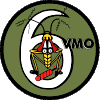
WW2

1951
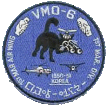
Korean War
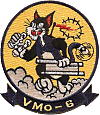
"Sylvester - Viet Nam
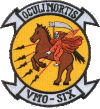
"Eyes of Death"
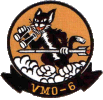
MARINE OBSERVATION SQUADRON 6
VMO-6
"Tomcats"
"Cherry Deuce"
Marine Observation Squadron 6 (VMO-6) traces it history to 1 December 1920, when Flight E, 3d Air Squadron was activated at Quantico, VA. Within the next seven years the squadron underwent a series of re-designations (Division 1, VF-1M; Division 1, VO-3M; Division 1, VO-6M) as new aircraft were assigned. VO-6M was assigned to the East Coast Expeditionary Force in 1927 and deployed to Nicaragua the following year. During 1928, VO-6M carried out counter-insurgency operations against the Sandinista forces until 1 September 1928, when the squadron was administratively relocated to Quantico (Squadron designation and colors only; personnel and aircraft remained in Nicaragua).
From 1930 to 1933, the squadron was engaged in training new pilots and mechanics, flying support for the Marine Corps schools at Quantico, and flying daily fire patrols for the Virginia Forest Service. In 1931, a flight demonstration team, the "Helldivers", was formed, and began performing at airshows as far away as Montreal and Cleveland.
In 1933, budget cuts led to a reduction in the number of Marine Corps aviation squadrons, and on 30 June 1933, VO-6M was deactivated.
World War Two saw the reactivation of Marine Observation Squadron 6. The "new" squadron was assigned to support the 6th Marine Division during the upcoming Okinawa operation. VMO-6 moved to San Diego, then to Hawaii, before embarking for Okinawa. From March through July 1945, VMO-6 participated in the Okinawa operation, flying from the Yontan airstrip. This would be the squadron's base until the end of the war.
In October 1945, VMO-6 deployed to Northern China to provide aerial reconaissance for Marine units operating there. VMO-6 relocated to Camp Pendleton in 1947.
With the start of the Korean War in 1950, VMO-6 was assigned to the 1st Provisional Brigade. Helicopters and crews were sent out from HMX-1 and joined the squadron. Over the next five years, VMO-6 performed numerous missions including artillery spotting, reconaissance, and search and rescue. VMO-6 helicopters performed countless medevac missions.
VMO-6 returned to Camp Pendleton in 1955. This would be its home for the next five years. In 1962, a detachment deployed in support of the Cuban Crisis operations; it was recalled before reaching the East Coast.
VMO-6 went to war again, deploying to South Vietnam in August 1965. At this time the squadron was operating UH-1E "Hueys"; in 1968, O-1C "Bird Dogs" were added, along with the OV-10A "Bronco". In 1967, Capt. Stephen W. Pless and his crew extracted four soldiers, under fire, from a beach where they were about to be overrun. For their heroism, Pless's crew were awarded the Navy Cross, while Pless was awarded the Medal of Honor.
In 1969, VMO-6 relocated to Okinawa as part of the drawdown of troops from Vietnam. The squadron supported the 9th Marine Amphibious Brigade and 1st Marine Aircraft Wing (Rear), and took part in numerous training exercises. The squadron rotated crews to Vietnam to fly with VMO-2, and in 1972, took custody of seven AH-1J "Sea Cobras" and trained replacement pilots for HMA-369.
VMO-6 was deactivated 1 January, 1977. It's personnel and aircraft were assigned to H&MS-36.
LINEAGE
1920 - 1933
- Activated 1 December 1920 at Marine Barracks, Quantico, Virginia, as Flight E, 3d Air Squadron.
- Redesignated 24 August 1924 as Division 1, Fighting Squadron 1, First Aviation Group, Quantico, Virginia.
- Redesignated 1 September 1925 as Division 1, Observation Squadron 3.
- Redesignated 1 July 1927 as Division 1, Observation Squadron 6, East Coast Expeditionary Force, Quantico, Virginia.
- Departed 27 January 1928 for expeditionary duty in Nicaragua.
- Assigned to Air Squadrons, 2d Brigade for counter-insurgency operations against the Sandinista rebels, 16 February - 1 September 1928.
- Administratively transferred from Air Squadrons, 2d Brigade to East Coast Expeditionary Force, Quantico, Virginia on 1 September 1928.
- Deactivated 30 June 1933.
1944 - 1949
- Reactivated 20 November 1944 at Quantico, Virginia, as Marine Observation Squadron 6.
- Relocated 1 January 1945 to Marine Corps Air Depot, Miramar, San Diego, California, and reassigned to Marine Fleet Air, West Coast.
- Deployed during January - February 1945 to Guadalcanal and reassigned to Aircraft, Fleet Marine Force.
- Reassigned 1 March 1945 to 2d Marine Aircraft Wing.
- Participated in the Okinawa campaign, March - July 1945.
- Reassigned 25 July 1945 to Marine Aircraft Group 21, 4th Marine Aircraft Wing.
- Deployed during October 1945 to Tsingtao, China, and reassigned to Marine Aircraft Group 32, 1st Marine Aircraft Wing.
- Reassigned during May 1946 to Marine Aircraft Group 25, 1st Marine Aircraft Wing.
- Reassigned 1 July 1946 to Headquarters, 1st Marine Aircraft Wing.
- Reassigned 20 July 1946 to the 7th Marines (Reinforced), 1st Marine Division (Reinforced).
- Relocated during January 1947 to Camp Pendleton, California, and reassigned to Marine Air, West Coast.
- Reassigned 1 October 1947 to 1st Matine Aircraft Wing.
1950 - 1962
- Deployed during July - August 1950 to Pusan, Korea.
- Participated in the Korean conflict, August
1950 - March 1955, operating from
Pusan
Chinhae
Inchon
Yonpo
Pohang-dong - Relocated during March - April 1955 to Camp Pendleton, California.
- Reassigned 22 April 1955 to Air, Fleet Marine Force, Pacific.
- Reassigned 15 September 1955 to 3d Marine Aircraft Wing.
- Reassigned 5 February 1956 to Marine Wing Headquarters Group, 3d Marine Aircraft Wing.
- Reassigned 1 July 1956 to Marine Aircraft Group 36, 3d Marine Aircraft Wing.
- Detachment participated in operations relating to the Cuban Missil Crisis, November 1962.
1962 - 1977
- Deployed during August 1965 to Republic of Vietnam and reassigned to 1st Marine Aircraft Wing.
- Participated in the war in Vietnam, September
1965 - October 1969, operating from
Da Nang
Ky Ha
Chu Lai
Phu Bai
Quang Tri - Relocated during October 1969 to Marine Corps Air Facility, Futenma, Okinawa and reassigned to Marine Aircraft Group 15, 9th Marine Expeditionary Brigade.
- Reassigned during November 1969 to Marine Aircraft Group 36, 1st Marine Aircraft Wing.
- Deactivated 1 January 1977.
HONORS*
- PRESIDENTIAL UNIT CITATION
STREAMER with four bronze stars
World War II
Okinawa - 1 April - 21 June 1945
Korea
2 August 1950 - 27 July 1953
7 August - 7 September 1950
15 September - 11 October 1950
Vietnam
1 September 1965 - 24 April 1967, 6 June - 15 September 1967 - PRESIDENTIAL UNIT CITATION (Army)
STREAMER
Korea
22 November - 14 December 1950 - NAVY UNIT COMMENDATION STREAMER with
two bronze stars
Korea
1 August 1952 - 27 July 1953
Vietnam
4 September 1965 - 24 August 1966
16 April - 16 October 1968 - MERITORIOUS UNIT COMMENDATION
STREAMER
Vietnam
1968 - 1969 - SECOND NICARAGUAN CAMPAIGN STREAMER
- ASIATIC-PACIFIC CAMPAIGN
STREAMER with one bronze star
Okinawa Gunto Operation - 1 April - 30 June 1945 - WORLD WAR II VICTORY STREAMER
- CHINA SERVICE STREAMER
- KOREAN SERVICE STREAMER with two silver stars
- NATIONAL DEFENSE SERVICE STREAMER with one bronze star
- ARMED FORCES EXPEDITIONARY
STREAMER
Cuba - 7 November - 29 November 1962 - VIETNAM SERVICE STREAMER with two silver stars
- KOREAN PRESIDENTIAL UNIT CITATION STREAMER
- VIETNAM CROSS of GALLANTRY with PALM STREAMER
- VIETNAM MERITORIOUS UNIT CITATION CIVIL ACTIONS STREAMER
* VMO-6 was considered to be the lineal descendant of Marine Observation Squadron 6 (VO-6M) which deactivated in 1933. It was granted the Lineage and Honors of that squadron.
- Nicknames: "Hell-Divers" (VO-6M); "Tomcats"; "Cherry Six"
- ID Code: WB 1950-1977
- Aircraft: OY-1; OE-1/O-1C; HTL; HO3S; HO5S; HOK-1/OH-43D; T-28C; UH-1E; OV-10A
- Web page(s):
VMO-6 Rocks (Vietnam era)
VMO-6 (Vietnam era)
VMO-6 Memorial Project